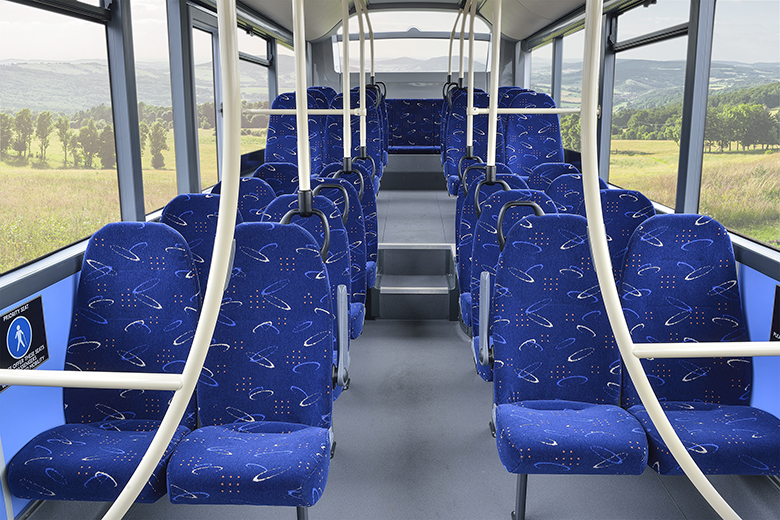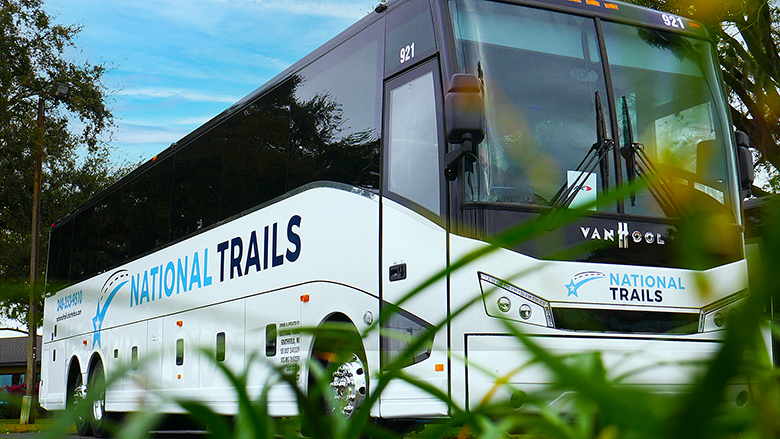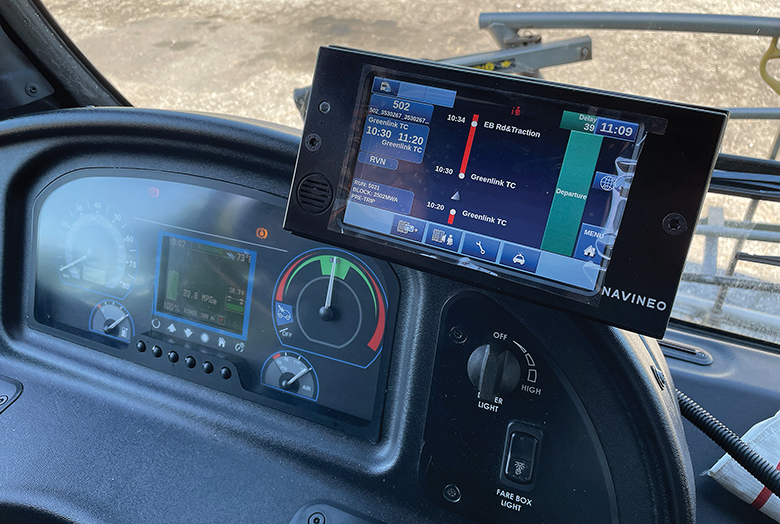COVID-19
- A New Age of Enforcement: Adjusting to Remote and Offsite Investigations & How to Prepare By:
Presented as part of ABA’s BISC & BusMARC 2021 Virtual Safety & Maintenance Series The American Bus Association’s Bus Industry Safety Council (BISC) and Bus Maintenance Repair Council’s (BusMARC) 2021 Virtual Safety & Maintenance Series offered a sequence of educational webinars early this year, covering a variety of industry-related topics. As part of its ongoing webinar series, the ABA hosted a virtual meeting with presenters Catterson Oh and Danielle Smith, transportation specialists with the Federal Motor Carrier Safety Administration’s (FMCSA) Compliance Division. Oh and Smith focused on COVID-19 national emergency investigative process updates including changes to the FMCSA investigative procedures due to COVID-19, recordkeeping and documentation as the result of COVID-19, and providing accurate documentation for FMCSA investigations. Changes to Investigative Procedures as a Result of the COVID-19 Health Emergency In May 2020, the FMCSA released guidance allowing investigators to conduct remote onsite investigations. These remote onsite investigations are intended to follow the same general process as offsite investigations with the exception that most of the investigation is now completed remotely. According to Oh, May 2020 resulted in a significant expansion to the FMCSA’s remote functionality. While motorcoach operators may not have seen any investigations in the last year, Oh noted that due to this expanded functionality, companies should expect a considerable increase in the number of investigations moving forward. “In terms of the offsite investigations with this pandemic, the policy with this particular type of investigation has not changed,” Oh said. “The offsite investigation will still be recommended for carriers that meet the appropriate criteria for this population of carriers.” Although carriers will not receive a rating from an offsite investigation, offsite investigations may be converted to onsite remote investigations under certain circumstances. Carriers with investigations that are converted onsite may be issued a Safety Fitness Rating. Overview of Investigation Process Safety Investigator (SI) will conduct an initial phone call with the carrier to introduce themselves, and review the reason for the investigation and next steps. 2. SI will email the carrier an Initial Contact Letter that will go over initial documents being requested. 3. Carrier will upload the initial documents to the Safety Measurement System (SMS). 4. After SI receives the initial documents, they may request additional documents via a Document Request Letter. 5. SI may contact the carrier via phone and email throughout the investigation. 6. Once SI has completed the investigation, they will request a closeout meeting with the carrier, which can be done via phone, Microsoft Teams, Skype, or other platform. 7. Carrier may receive a Safety Rating upon completion of the Remote Onsite Investigation. According to Oh, carriers subject to investigation will receive a phone call, followed by an initial contact letter, from an FMSCA Safety Investigator (SI) introducing themselves, the reason for investigation and next steps. Once a carrier has received this letter, that carrier’s information will need to be uploaded into the FMCSA Safety Measurement System (SMS). After receiving the initial documents, an SI will review the content to determine if additional documentation is required. If additional documentation is needed the SI will issue a “document request letter.” “This is where things start kind of diverting from the normal way of doing things,” Oh explained. “Especially when you have performed onsite investigations.” An SI will start contacting the carrier via phone and e-mail throughout the investigation. In a normal onsite investigation, the SI would be with the carrier in person to answer questions and provide additional guidance. Once the SI has completed their investigation, they will request a close out meeting with the carrier. This can be done over the phone or, more likely, in a video conferencing setting. At this point, the carrier may receive a safety rating upon completion of the remote onsite investigation. Once the SMS has processed the information, the carrier will be able to access their dashboard, track investigation progress, check due dates and required documents, view call-to-action reminders, upload documentation, and learn to use data to increase safety performance. After the SI has reviewed all of the required documents, they will send the carrier a request for a meeting to close out the investigation. Typically, this is done onsite, face-to-face however, since the onset of the pandemic, closeouts are now performed virtually. Reinstatement After Voluntary Revocation of Operating Authority In March 2020, the FMCSA issued multiple exemptions in response to the national health emergency. One of those exemptions included waiving the $80 reinstatement fee for carriers who opted to voluntarily revoke their Passenger Operating Authority. Carriers with a USDOT pin can login into their profile, update their registration information, and complete an MCSA-5889 form, a Motor Carrier Records Change. Carriers without a USDOT pin, can register and request a pin number through the FMCSA website. Before submitting a request, carriers will need to file a BOC-3 (Designation of Process Agent), confirm insurance filings are up to date, and make sure that their USDOT number is reinstated and activated. Once these items are completed, the reinstatement request is going to be put on hold until the carrier has everything submitted properly. “If all is submitted and you do have to pay that fee, then you’ll get it reinstated no later than the fourth business day after the payment is processed,” Smith explained. “You can request that the fee is waived, you’re just going to submit it through EMC’s e-mail address rather than doing it through the normal process online.” FMCSA Ratings The FMCSA issues three types of ratings. Satisfactory, conditional, or unsatisfactory. Satisfactory means that there are safety systems in place and they all appear to be working. Conditional means that there are safety systems in place, but there are breakdowns within some of those systems. While carriers are still able to operate with a conditional rating, some choose not to do so and would rather upgrade their score. Unsatisfactory ratings mean a carrier is considered unfit and are not allowed to operate after that time. “All of the critical violations are listed within the Read More >
Motorcoach
- National Trails Continues Growth, Streamlines Charters with busHive By:
Since taking new ownership in 2019 with nine drivers, one office employee, and one mechanic, Michigan-based charter and tour company, National Trails, has seen tremendous growth. In the last three years alone, the company has more than tripled the number of employees, doubled its school bus fleet and increased its motorcoach fleet size by 15. “During this period of rapid growth, we have been incredibly reliant on our software,” said Austin Arksey, owner of National Trails. “If we didn’t have software like busHive, we would not have been able to scale as easily and as efficiently as we have.” According to Arksey, when he purchased National Trails in 2019, charters were managed via handwritten or typewritten messages being physically handed to drivers. One of the first initiatives the company undertook was digitizing these many processes, and that meant migrating the manual charter-booking into busHive. busHive provides cloud-based software to streamline workflows and recordkeeping across the entire charter process – from the initial quote to confirmations, contracts, generating driver itineraries, billing, and invoicing. National Trails uses the software to manage its sales, billing, and payroll – with reporting that shows revenue per vehicle, profit/loss analysis, and other important benchmarking tools. “As we are continuing to add additional fleet, busHive has been very instrumental in giving us the keys to have visibility to being able to see our trips on a daily, weekly, monthly, even annual basis as well,” Arksey said. “It has been very helpful to have solid software in place as we continue to grow.” However, rapid scalability often comes with its own set of challenges as National Trails well knows. With the accelerated addition of employees, Arksey said that ensuring new hires are fully trained and brought up to speed on how the company functions and operates has been one of the biggest challenges thus far. “As we’ve been hiring people, some of the things that we look at are people’s adaptability, are they quick learners, especially when it comes to working with software and technology,” Arksey said. “We are not looking at people that can solve and handle the challenges that we have just today, that can help us solve the challenges we have tomorrow and beyond.” Arksey said that busHive has been instrumental in helping National Trails keep track of driver credentials and expiring licenses. The driver management tool has also enabled the company to maintain certifications without having any lapse in downtime for drivers. With the influx of new coaches and new business, preventive maintenance (PM) is always a primary concern. With more buses in the fleet, National Trails has continued to prioritize preventative maintenance on all its equipment. All work orders are loaded into busHive, allowing the company to ensure that PM orders process correctly and that inventory is properly maintained. “With the busHive software, we transitioned our techs from doing work orders on paper to doing them on tablets so we could reduce the amount of time that it took for those work orders to get into our system and have quicker visibility to be able to make decisions on equipment,” Arksey said. “Our downtime was reduced, and we were able to better manage, monitor and maintain our preventative maintenance schedules.” Arksey said he and his team feel extremely comfortable utilizing the busHive charter system as National Trails continues to grow, citing the great support network which the company provides. “The busHive team has been great,” Arksey said. “In the many years we have been working with busHive we have not faced any outages. Anytime we have suggestions their team is always receptive to changes and interested in learning about new ideas. It has been a great partnership and experience.”
Transit
- South Carolina’s Greenlink Manages ITS with EQUANS By:
The agency Created in 1974 and operated by South Carolina’s City of Greenville, Greenlink is responsible for 12 fixed routes covering destinations all across Greenville County. Whether traveling to work, school or a medical appointment, Greenlink’s goal is always to provide its ridership with a safe, convenient and affordable transportation option. However, according to James Keel, executive director of Greenlink, when he joined the team in December of 2015, he was immediately struck by the scale of work needed to bring the agency into the 21st century. “I knew that over time we would need a significant overhaul,” Keel said. “What was driving a lot of the thought process at the time was dealing with same-day changes, driver shortages, what happens if you don’t have enough drivers, what kind of modifications can you make to your blocking or scheduling without disrupting rider’s experience. A lot of that thought really went into the scope of work and how we were going to be able to provide better customer service.” Since 2015, the agency has made significant changes including the development of a new operations and maintenance facility, the deployment of electric buses, and upgrading over 300 bus stops in the system. But Greenlink wasn’t ready to stop there. The partnership In the summer of 2022, the agency put out an RFP seeking a complete reconstruction of its Intelligent Transportation System (ITS). “What we were really trying to do is figure out how to get better information in order to make clearer, data-driven decisions,” Keel said. “When we went to market, there were several different CAD/AVL vendors that came to the table. Ultimately, what drove us to EQUANS was their vast experience in solving a lot of the problems that we had just started encountering over the past couple of years.” EQUANS’s Intelligent Transport Systems (ITS) and CAD/AVL suite named NAVINEO has been designed specifically for public transit operators whose personnel work with real-time transportation management tools to ensure and improve communication between their fleet and drivers. Its function is to make bus operations more fluid, from the dispatching of vehicles, in order to guarantee optimal management of daily operations, reduce costs and ensure seamless communication with passengers. EQUANS’s CAD/AVL System is fully mobile, as staff can access it from a tablet or a smartphone. “EQUANS partners with cities as large as Paris, which has 4,000 buses. We work with many large cities including Dubai, Brussels,Geneva, andQuebec City, which has 700 buses in its fleet,” said Kilian Ollivier, Director of Business Development for EQUANS. “Comparatively, Greenville is 26 buses, but it works just as well and is configurable for any size agency to be equally effective.” The combined system of Computer-Aided Dispatch (CAD) and Automatic Vehicle Location (AVL) offers the advantage of optimizing service performance, increasing reliability and enhancing passenger safety. Supervisory personnel can manage vehicles using connected devices and respond to field disruptions by creating detour or canceling trips. After accepting EQUANS’s proposal, the two companies quickly got to work putting together a detailed scope of work, implementing ideas often seen in much larger transit systems such as ensuring that APCs were statistically validated in order to track average passenger trip length for NTD reporting; instituting essential integrations necessary for the Transit app, Google Maps, Bing and Apple; planning for SMS text and Interactive Voice Response (IVR) capabilities for rider updates. The onboarding process “They started with an onsite visit and fleet analysis to determine the condition of our fleet, all the integrations that would need to take place, and to get a feel for what the technical capacity of our maintenance team was,” Keel said. After a thorough configuration assessment, EQUANS prepared a comprehensive training program for the Greenlink drivers and operation staff that would launch with the first stages of the installation process. “We always train on site,” Ollivier said. “We are with them in the same room and that usually starts at the pilot stage and is continued throughout the entire installation process. We have class sessions, but we also have hands-on sessions where we use a bus-in-the-box to train for real-world scenarios.” Maintenance training also happens during this period. According to Ollivier, during the installation process, maintenance staff are brought on site to observe installation in order to gain a better knowledge of hardware, maintenance and troubleshooting. Once the primary training has been completed, EQUANS provides a full year of free follow-up training for agency staff, which Olliver says is a critical time frame when introducing a new system. “That first year is key,” Ollivier said. “You are starting to use a brand-new system, so you want your staff to be as comfortable and capable as possible. As humans we have a hard time with change. We, at EQUANS, understand that, so we want to make sure that we are available to help our client through that change.” The results Once equipment installation and staff training were complete, a 30-day testing phase was implemented to ensure the system was up and running effectively. “It has very much been a methodical process of looking at what is the facility capacity, where do the people have our proficiency, getting them trained, implementing, and then go live with it,” Keel said. “All of that took months to pull off, but at the end of the day very little went wrong in any of those phases that wasn’t rectified within a couple of hours or a couple of days.” Greenlink then began its campaign to introduce the new system to its ridership and encourage users to download the updated Transit app. “We really started pushing the public to download the Transit app, stop calling our dispatch booth, call or text this new automated number.” According to Keel, with the installation of the new ITS system and the integration for SMS and IVR, Greenlink has seen a significant decrease in the number of phone call requests for a live agent and a simultaneous increase in the number of SMS and Read More >








